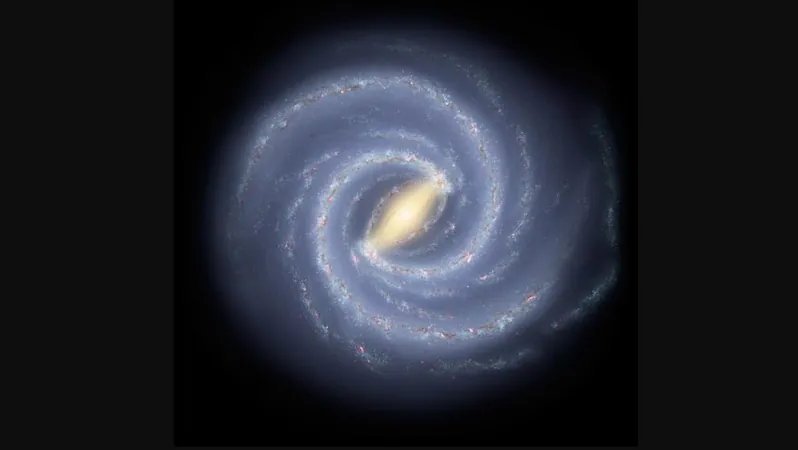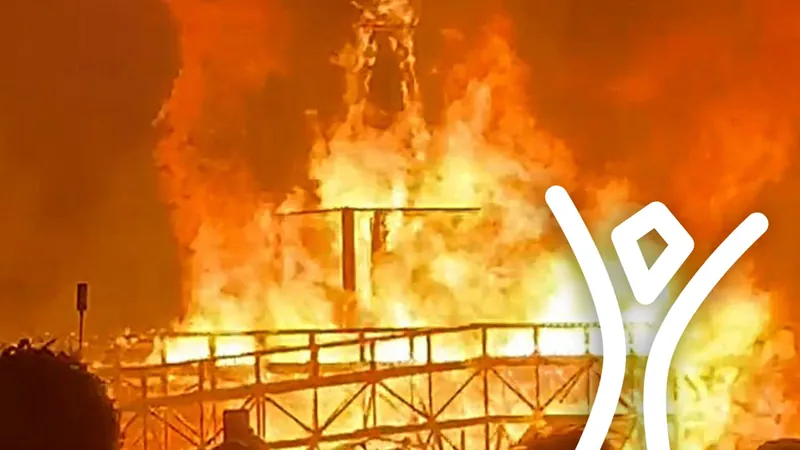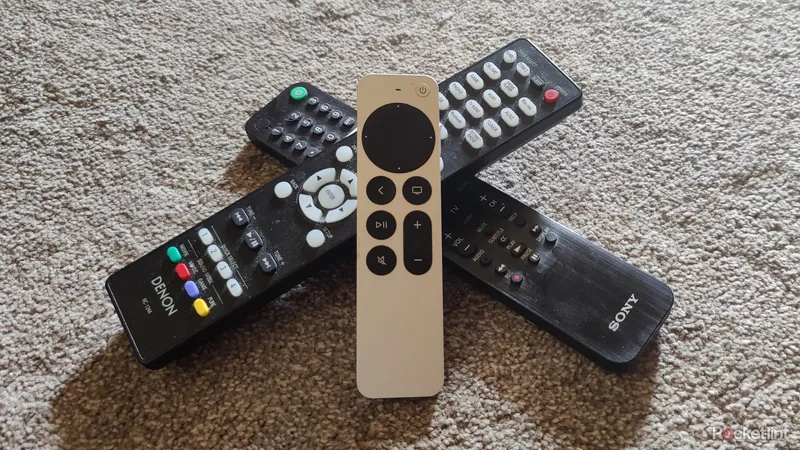
A Cosmic Void: The Key to Solving the Hubble Tension?
2025-07-22
Author: Amelia
Is a Massive Void in Space the Answer to Our Biggest Cosmological Puzzle?
In a groundbreaking revelation, scientists have identified a vast, low-density region around the Milky Way that could explain one of modern cosmology's most perplexing dilemmas: the Hubble tension. This refers to conflicting measurements of the universe's expansion rate, which has left researchers scratching their heads for years. Recent studies suggest that this local cosmic void might bridge the gap between these discrepancies, offering a fresh perspective that challenges the Standard Model of cosmology.
Indranil Banik, a prominent cosmologist from the University of Portsmouth, highlights the severity of this issue, stating, "Local measurements of the expansion rate are 8% higher than what we would expect based on early universe observations — a difference far too significant to dismiss as mere error." This discrepancy raises urgent questions about our understanding of the cosmos.
Two Methods, Two Different Results: What’s Going On?
The Hubble constant is critical for understanding how fast the universe is expanding, measured primarily through two methods: observing the cosmic microwave background (CMB), a remnant glow from the Big Bang, and studying nearby astronomical objects, like supernovae and galaxies. If the Standard Model were perfect, both should yield similar results. Unfortunately, they don’t — the disparity suggests a local environment may be influencing our measurements.
Could Our Local Environment Be Distorting Observations?
What might be skewing the results? Banik speculates that our galaxy is situated in a region about 20% less dense than the cosmic average, extending roughly one billion light-years. This phenomenon, supported by a wealth of data from various electromagnetic sources, could alter the perceived redshifts of galaxies — a vital measure that tells us how fast these celestial bodies are moving away from us. In a low-density area, the gravitational pull from denser regions accelerates the outward motion of galaxies, leading to the appearance that the expansion rate is significantly quicker.
A Void Rooted in the Universe's Childhood?
This cosmic void possibly traces its origins back to quantum fluctuations in the universe's infancy. However, Banik cautions, the size and depth of this void challenge the predictions made by the standard cosmological model, suggesting that cosmic structures may need to evolve faster than theory currently allows.
Testing the Theory: A New Methodology on the Horizon
To examine the validity of the void hypothesis, Banik and collaborator Vasileios Kalaitzidis utilized baryon acoustic oscillations (BAOs), subtle ripples in the galaxy distribution formed by sound waves from the early universe. These BAOs act as a cosmic "ruler" to gauge how the universe has expanded over time.
Their recent analysis across two decades of BAO data reveals something astonishing: the void model is about one hundred million times more consistent with observations than the traditional cosmological framework without a local void. Banik asserts, "We were strictly testing the predictions of both models, ensuring fairness in our comparisons."
What Lies Ahead: A Cosmic Quest for Answers
While advocates for the void theory remain hopeful, Banik acknowledges that further observations are needed, particularly at shorter distances, to truly confirm this local void's effects. Ideas such as analyzing galaxy velocities and refining galaxy number counts are on the table, with Banik suggesting that concrete evidence could emerge in the next five to ten years.
In addition, he is examining distant supernova data to determine if the Hubble tension dissipates at greater distances, as the influence of a local void may diminish far from the Milky Way. Despite these challenges, Banik is optimistic: with continuing advancements in observational techniques and data refinement, a resolution to the Hubble tension might be closer than we think.









 Brasil (PT)
Brasil (PT)
 Canada (EN)
Canada (EN)
 Chile (ES)
Chile (ES)
 Česko (CS)
Česko (CS)
 대한민국 (KO)
대한민국 (KO)
 España (ES)
España (ES)
 France (FR)
France (FR)
 Hong Kong (EN)
Hong Kong (EN)
 Italia (IT)
Italia (IT)
 日本 (JA)
日本 (JA)
 Magyarország (HU)
Magyarország (HU)
 Norge (NO)
Norge (NO)
 Polska (PL)
Polska (PL)
 Schweiz (DE)
Schweiz (DE)
 Singapore (EN)
Singapore (EN)
 Sverige (SV)
Sverige (SV)
 Suomi (FI)
Suomi (FI)
 Türkiye (TR)
Türkiye (TR)
 الإمارات العربية المتحدة (AR)
الإمارات العربية المتحدة (AR)